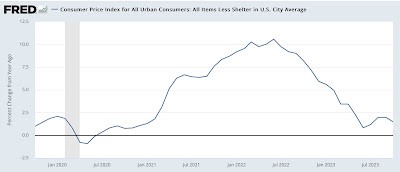Building Badly Needed Muti-Family Housing What is holding back more building of badly needed muti-family housing is the Fed Rate. The effort of course is to bring down inflation. As you read, I think you will discover the effort by the Fed is not achieving the goal it wishes to achieve. Indeed, its efforts to reduce inflation is hurting housing. Read the different scenarios and see if you agree. In a recent Employ America article, Skanda Amarnath discusses the growing shortage of multifamily housing in various stages of construction. Such that the months of supply under construction has shrunk from 30 months to 18 months. Such large dwelling projects can take 1 to more years to complete. The importance of which, we may soon hit a dry spell of
Topics:
Angry Bear considers the following as important: Fed Rates and housing, multi-family construction, US EConomics
This could be interesting, too:
NewDealdemocrat writes JOLTS revisions from Yesterday’s Report
Bill Haskell writes The North American Automobile Industry Waits for Trump and the Gov. to Act
Bill Haskell writes Families Struggle Paying for Child Care While Working
Joel Eissenberg writes Time for Senate Dems to stand up against Trump/Musk
Building Badly Needed Muti-Family Housing
What is holding back more building of badly needed muti-family housing is the Fed Rate. The effort of course is to bring down inflation. As you read, I think you will discover the effort by the Fed is not achieving the goal it wishes to achieve. Indeed, its efforts to reduce inflation is hurting housing. Read the different scenarios and see if you agree.
In a recent Employ America article, Skanda Amarnath discusses the growing shortage of multifamily housing in various stages of construction. Such that the months of supply under construction has shrunk from 30 months to 18 months. Such large dwelling projects can take 1 to more years to complete. The importance of which, we may soon hit a dry spell of housing in development stages. I witness a similar amount of time passing in Arizona also and just in drive-byes.
The months of multifamily units’ supply under construction has fallen from over 30 months down to just over 18 months. The effect of ever-decreasing permitted units over the past several quarters is not seen in current completions. It’s seen in completions 1-3 years later. However, and seen in lower units under construction today.
Should the supply picture show further deterioration—as measured by the number of units under construction relative to the existing capacity to complete units—upside risks to housing CPI and PCE inflation would swell. These housing inflation measures are based on rent data, even when used to proxy owners’ equivalent rent.
All of this puts the Fed in a highly awkward position (Fed Rates), one in which their aggressively restrictive policies of today have choked off future housing supply and stoked upside risks to housing inflation 1-3 years forward.
Employ America’s Skanda Amarnath: “Fed’s Other Supply-Side Dilemma: Today’s Restrictive Policies Are Deteriorating Tomorrow’s Housing Supply Outlook.”
Biden’s Plan to Rein in Rent
More recently and recognizing the issue of a lack of housing, the Biden administration is moving forward with a plan of its own. Joe Biden is proposing a plan to restrict abnormal increases in apartment rental in the near term. He revealed a series of proposals aiming at lowering housing costs on this last Tuesday. This comes about as inflation and increasing home prices are shaping up to be decisive issues for voters this year.
Subject to congressional approval, the plan calls for withdrawing tax credits from landlords who raise rent by more than 5% per year, beginning this year, and also for the next two years. It (the plan) would apply only to larger landlords who have more than 50 units in their portfolio. This numeric accounts for more than 20 million rental units across the country according to the White House.
The policy includes an exception for new construction and buildings that are being substantially renovated. The exception is aimed at incentivizing new rental property construction to increase the supply of apartments and homes for rent.
In a statement Joe Biden . . . “While the prior administration gave special tax breaks to corporate landlords, I’m working to lower housing costs for families. Republicans in Congress should join Democrats to pass my plan to lower housing costs for Americans who need relief now.”
Is There Really a Problem or is This a Reaction to Fed Rates?
Gonna switch hats here again and pull up New Deal democrats’ commentary from December 2023 which also carries through to later months in 2024.
Jason Furman writes, core ex-housing is up only 1.7% YoY, and substituting current rents for the official measure of housing is up only 1.5%.
New Deal democrat writes: As a refresher, this is exactly what CPI ex-shelter (click on to enlarge) looks like:
To be absolutely clear: the PCE inflation gauges, just like the CPI measures, show that excluding housing, inflation is already under the Fed’s 2% target. And if we include more current rent and house price measures, it is even a little lower than that.
Please do note that in the past few months, both PCE ex-shelter and CPI ex-shelter have bottomed. They aren’t really increasing, but they’ve stopped decreasing. But – I know I’ve said this before – there really is no valid reason for the Fed to maintain a restrictive posture on interest rates. Indeed, if the Fed lowered rates a little, and mortgage rates declined to, say 5.5%, that might break the logjam in the existing home market, via more inventory and paradoxically help keep prices down.
“Ex-housing, PCE inflation, like CPI inflation, is under the Fed’s 2% target,” The Bonddad Blog

